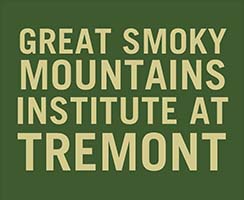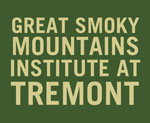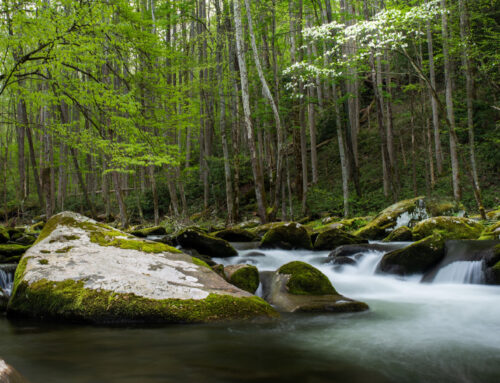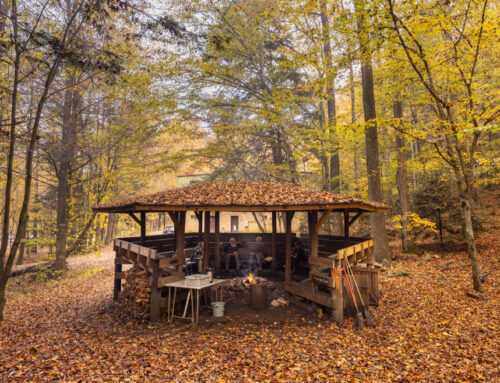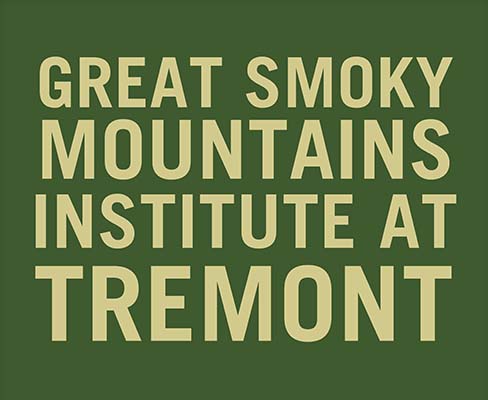Written by Anthony Rampersad, 2024 Autumn Brilliance Photography Workshop participant. Above: Foggy Sunrise on the Foothills Parkway, GSMNP, Tennessee (Image by Anthony Rampersad).
I am compelled to begin by saying how disappointed I am that I hadn’t done this earlier. I took up photography as a hobby nearly 15 years ago, and when I started I foraged greedily on every bit of literature I could get my hands on to learn the craft. I bought the magazines and books, I watched the videos on Youtube, I read blogs posts, and internet forums. My dad dabbled in photography in his day with a very sophisticated Ricoh SLR. He loved books, and so I peeled through the aged pages clam-shelled between the worn and softened covers of the photography books he kept on our old bookshelf. These books contained some of the images my brain refuses to delete, even now, decades later.
Several Birds, One Stone
It was something of a Eureka moment when the thought of a workshop struck me and left a scar. I was getting tired of all the recycled YouTube content, and I got tired of my own laziness; hoping to get good pictures sitting on my couch watching videos was a plan doomed to fail from the start. I needed to mobilize my posterior; my comfort was killing my craft.
Although I had considered workshops in the past, the introvert in me quaked at the thought of having to interact with people. Photography suited me because it had always been a silent, solo, non-communal pursuit. And according to statistics published by the International Association of Introverted Humans (we’re on target to reach our goal of zero meetings per year), 93.7% of all introverts prefer silent and solo pursuits. But I was dissatisfied at the doldrums I had sailed myself into. The impetus crept up to me in the form of poorly remembered, though no-less-true proverbs I had heard over the years:
- “In order to achieve something you’ve never achieved, you have to do something you’ve never done” [Message: I needed to get uncomfortable].
- “Insanity is doing the same thing over and over and hoping for a different result” [Message: I won’t make progress if I continue the current routine].
- “Rome wasn’t built in a bay” (Both poorly remembered and made-up). [Message: Safety and shelter won’t produce great work].
The workshop idea was taking root. Why hadn’t I thought of this earlier? It’s a compact form which kills many metaphorical birds with one metaphorical stone. While the videos, books, and magazines were isolated dietary supplements, the workshop was a proper whole-food multivitamin. Here’s why I think they work.
- Travel: As much as we love travel, when photographers travel with family and friends, it’s challenging to carve out time for shooting. A location-based workshop is travel for the dedicated purpose of improving your photography. But let’s not get whisked away with the travel notion, even a local workshop achieves the same thing; it forces you to carve out a dedicated chunk of time, in a specific place, for your craft.
- Networking: Every other group does it; people who play golf, tennis, or people who drink beer all do so in groups. It’s why churches work; communities offer validation, reinforcement, subscription to shared goals, and support for the weaker in their ranks. I saw and experienced this in practice at the workshop; people (instructors and attendees) were helping me and I was likewise helping others. Hearing my fellow workshoppers share their stories and experiences gave me ideas for techniques to try, places to shoot, and resources to dig deeper into.
- Portfolio building: This is the coveted custard filling in the center of a hot donut on a cold day. This was a high priority objective for me attending the workshop; I wanted to come away with images I loved of a place I loved. I would consider the workshop a success even if I had only added one great image to my portfolio.
- Learning from seasoned practitioners: Although learning how to create images wasn’t one of my goals in taking the workshop, Id be dishonest if I said I didn’t learn some things. 87.6% of all my shooting had always been done handheld, and I worked hard at maintaining that number for no other reason than sheer laziness. So naturally, my tripod technique was lacking. This workshop forced me to tame that three-legged carbon fiber creature, or at least make peace with it. My tripod and me are now a veritable, five-legged, picture-making, dynamic-duo. Healthy field technique with the tripod was just one topic I gained from. But I was equally able to find nuggets of wisdom in all of the other presentations.
- Discipline and discomfort: The structure of the workshop mixed classroom sessions with field sessions. The field sessions required mobilization from pre-dawn to get to specific locations to catch the sunrise. Alarms had to be set for 4:30am. This was the discipline I didn’t hold myself to when no one else was around. Too often I had snoozed alarms, or fabricated excuses to cancel shoots I had planned in advance: “Ugh, it’s going to rain”, “Ugh, too overcast”, or “Ooff, looks like there’s going to be a stampede of wild sea lions”. It’s no fun getting out of a squeaky dormitory bed at 4:30am to venture into the dark and cold, but this is what I needed to do, and make a habit of doing.

Fall Color in the GSMNP (Image by Anthony J. Rampersad)
Review — The Autumn Brilliance Photography Workshop
This isn’t a plug for the workshop I attended. I specifically chose this workshop because of a fondness I have for the Great Smoky Mountains National Park (GSMNP) and all things Tennessee.
The Autumn Brilliance workshop is hosted by the Great Smoky Mountains Institute at Tremont. Yes, there were other photographers and groups which offered workshops in the GSMNP, but the Institute at Tremont does great work with conservation and education, so I wanted to support its initiatives.
The workshop is usually timed, as close as possible to coincide with peak foliage color in the mountains. This year (2024), it proved challenging to predict. Admittedly, I was underwhelmed on my drive up to the institute to check-in for the start on Friday afternoon. Much of the foliage had already fallen. This is the reality of photography, unless you’re shooting in a studio, there is little you can control besides when you show up and what you do with what you find.
We started on the Friday evening with introductions all around the room. Our five instructors came from a variety of professional backgrounds and each had portfolios centered on different sub-genres of nature and landscape photography, resulting in a nicely balanced approach to guiding the attendees. We got through some presentations on photography basics and field techniques before turning into the dorms for an early start on Saturday.
Field Session 1: Saturday morning was a 6:30 a.m. departure for Elkmont, the old logging campgrounds in the Smokies. We were at liberty to roam around the trails getting our shots in sub-groups, each guided by an instructor who provided hands-on help if anyone needed. We made a mid-morning retreat to Tremont where we downloaded and processed images and sat through class sessions on light, image-processing, photographic style, and image-evaluation.
Field Session 2: On Saturday evening we drove up the Tremont road for shooting along the river trail at the end, then returned to the Institute for one-on-one processing guidance.
Field Session 3: Sunday morning was a 5:30am departure to catch the sunrise from Foothills Parkway. The weather forecast indicated fog in the early dawn hours. Our hope was that a lower altitude fog would fill the valleys and highlight the contours of those beautiful receding layers the Smokies are known for. Instead we got a fully draped and veiled whiteout through the entire morning until the sun rose too high for sunrise shots. We returned and worked on our images in preparation for the group review/critique scheduled for the afternoon.
Group Critique: This was an invaluable session which ran all the way into Sunday evening. Instructors, together with input from the class, gave insights into how each participant’s nominated images may have been improved. The session was intense but packed with good advice even when it wasn’t my own images being critiqued.
Field Session 4: Another 5:30am departure on Monday morning for early access to Cades Cove before the floodgates opened to visitors. Sunrise was partially obscured by clouds. But we worked with what we had until the sun was too high. We spent the rest of the morning roaming around the campgrounds and old mill at Cades Cove, again in sub-groups with the instructors guiding as needed. This was the wrap-up and departure, and the official end of the workshop.
Bonus Session: Post workshop, instructor Steve Zigler hosted a day-long session on image post-processing, titled Personally Expressive Image Making, using Adobe Lightroom, Camera Raw, and Photoshop. This was a nutrient-dense class which covered everything from the basics of how digital imaging works, to the magic of masks, and the cleverness of curves, together with some other advanced topics. Steve’s enthusiasm for the subject and his level of comfort with the software made this a perfect add-on to an overall successful workshop experience.

Mountain stream in the Smokies (Image by Anthony J. Rampersad)
My Key Takeaways
- Organization and preparation: The experience of having to pack for a workshop left me lamenting at how disorganized I was with my equipment. Given that I was flying, the constraints of luggage limits required me to choose my pieces wisely. Organization is a discipline I also need to sharpen. I learned that failing to organize my gear cost me dearly in time wasted looking for items I knew I had stashed somewhere. The small items, especially; battery charger, lens caps, remote shutter release, and card reader. Don’t underestimate the importance of keeping your gear organized at all times. The workshop organizers provided a gear checklist long in advance of the start. This was invaluable in helping to decide what to pack and keep track of whether I packed it. This will be handy for all future packs.
- Packing for productivity in the field: Related to organization, don’t underestimate the value of a practical camera bag. I had grown accustomed to tossing cameras and lenses in hiking backpacks squeezed in with my laptop and a jumble of charging cables, card readers, headphones, etc. It was always a mess. During the field sessions I found myself having to dig the full vertical length of the backpack, just to get to something I needed (a filter, for example). Lens changes were particularly frustrating. This is a terrible system, if it can even be called a system. In the field, this can cost you time, cost you the shot, and cost you in broken or lost equipment. As soon as I got back from the workshop, I made it a priority to find a good camera backpack. My basic requirements were: a backpack that can fit two camera bodies and two lenses, it must take my laptop, and MUST fit under an airplane seat (my preferred stash-point when traveling). The ability to open a sectioned and padded camera backpack flat in front of you when you’re in the field will make your sessions more productive. Sidenote: don’t get dismayed when you see popular camera backpacks crossing the $200, even $300 price tags. I got one for under $100, and after one month where I’ve already flown with it once, I am very pleased with the purchase.
- Mastery of tools: Mastery of your tools will further enhance the productivity of your field sessions. As I mentioned earlier, I was much less comfortable with my tripod than I should have been. During the field sessions I found myself fidgeting with it too much, trying to find the correct locks and knobs to make the fine adjustments I needed. The difficulty of doing this doubles when shooting in the dark, pre-dawn hours. This was also my first time using graduated neutral-density filters. Having the right equipment is just one half of the equation. But you need to be so fluent with the gear that setting it up or adjusting it can be done without thought, or even without light.
Conclusion
The metaphor of the photography workshop as a proper whole-food multivitamin is by no means a hyperbolic stretch. The Autumn Brilliance workshop made me uncomfortable and highlighted the inefficiencies in my field-shooting practices. These are good outcomes which, when tallied up with the other benefits like networking and portfolio building, make the virtues of a good workshop stand out as one of the best investments in my craft that I’ve made. I hope to keep taking my multivitamins, not arbitrarily, but with the consistency needed to keep building my experience, knowledge, and photographic portfolio in the direction I want.
Disclaimer: 93.4% of all the statistics used in this essay (this statistic included) were made up on the spot.
